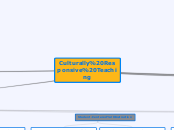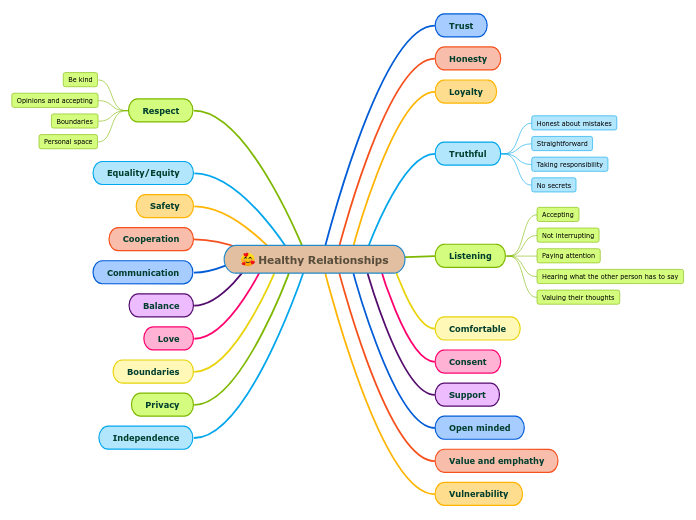Resources
The Education Alliance: Brown University. Culturally Responsive Teaching. Retrieved from https://www.brown.edu/academics/education-alliance/teaching-diverse-learners/strategies-0/culturally-responsive-teaching-0
Culturally Responsive Teaching
Benefits for English Language Learners
Helps teachers understands that ELLs are learning a new language but have knowledge in their native language.
Allows teachers to continue to challenge academically while giving ELLs scaffolds and accommodations to make content comprehensible.
Uses cultural conversations and related activities to reduces anxiety about language acquisition to promote language production and communication.
Provides academic support using various materials and learning activities and styles that addresses needs and interests such as: small group instruction, student-centered, group centered, hands on learning, visuals
Makes students feel valued and part of the classroom and learning process. Provides a less stressful transition into a new culture.
Benefits for Diverse Learners and Students with Disabilities
Creates a safe and predictable environment for students with disabilities.
Students have the opportunity to work in collaborative groups with their peers. Peers can offer varying ways of learning skills, directions, and understanding.(Examples: book buddies, peer tutors, partner share, group work)
A curriculum tailored to their real-life situations will enhance their intrinsic motivation to learn and take ownership over the material. Having relevant content and the appropriate accommodations in place allow a greater opportunity for success and helps the student feel valued.
Uses a variety of teaching and learning styles which greatly benefits students with disabilities and addresses their needs in the least restrictive environment.
Strategies for Implementation
Use Technology:
1. Connects school curriculum to the 21st century learner
2. Enables curriculum to become relevant to the 21st century learner
3. Provides students a tool for applying concepts in a variety of contexts
4. Permeates the real-world environment of the 21st century student
5. Is transferable, integrated, personalized, organized, adaptive, and pervasive
6. Supports higher-order skills of critical thinking analysis, and scientific inquiry
Other Strategies for Implementation:
1. Create a positive learning environment
2. Utilize a diverse curriculum
3. Work with families that come from different races and ethnicities
4. Provide children with role models from their own culture
5. Use student's cultures to help them learn skills taught in school
6. Teach multi-cultural education at an early age
7. Use texts that have characters of all different backgrounds to promote culturally relevant teaching.
8. Family research where students interview family members and learn about cultural influences
9. Teachers advocate for students sharing their own personal experiences with their classmates.
10. Recognize diversity and incorporate their backgrounds into the lesson and classroom environment.
11. teach social skills and use cooperative learning to build a sense of belonging.
12. Prevent and respond to teasing, bullying, and exclusion of students
13. Establish a caring environment and personal, positive relationships with students.
14. Conduct individualized goal setting and evaluation.
15. Provide positive feedback and recognition.
16. Allow students to have input in creating rules and consequences.
17. Include students’ interests, strengths, and culture in curricular planning.
18: Grouping Strategies: flexible grouping (teacher led, student led)
19: Assessment Strategies: Initial and Ongoing , formative and summative, student self-assessment
17. Guest Speakers: guest speakers may inherently engage and motivate students who share a culture with them.
18. Provide students with chances to work cooperatively for pro-social interaction. Learn about each other
20. Link student histories and the world to subjects being learned.
Create implementation teams. Team collaborations should be done to collect implementation data, consistency of implementation, identify challenges and successes, engage in professional learning, and determine the next steps of culturally responsive teaching practices.
Teachers must take pride, have a commitment to their profession, and believe that all children can be successful.
Characteristics
Teacher as Facilitator
Examples of Teacher Facilitation:
1. Learn about different cultures and backgrounds
2. Allow students share cultural artifacts and family traditions
3. Have students further research aspects of their culture
4. Vary teaching approaches to accommodate diverse learning styles (cooperative learning groups, student-directed discussions, clubs)
5. Have members of the community or parents speak and/or teach lessons to students on various subjects
Teachers should develop a learning environment that is relevant to their students' social, cultural, and linguistic experiences. Educators can act as mentors, consultants, instructors, and advocates for their students, helping to connect their culturl to their classroom learning experiences.
Use the students' home cultural experiences as a foundation for developing knowledge and skills. This facilitates the transfer of what is learned in school to real-life situations.
Reshape the Curriculum
Examples of Reshaping:
1.Use resources other than textbooks for study
2. Include cooperative learning
3. Provide students with alternative viewpoints or beliefs of a topic
4. Develop learning activities that are more reflective of students' backgrounds
5. Allow students flexible working: either working alone or in groups
6. Encourage students to interview community members who have knowledge of study topics
It is vital to create best practices the promote a positive school climate for those teachers who work within the schools and the student that learn there.Educators take an active role in reexamining all educational practices and how they affect the learning of all students.
The curriculum should be integrated, interdisciplinary, meaningful, and student-centered, including issues and topics related to the students' background and culture. Promotes higher-order thinking skills.
Culturally Mediated Instruction
Examples of Culturally Mediated Instruction:
1. Visit communities of students to learn more about their learning
2. Ask about learning style preferences
3. Set realistic and rigorous goals for students
4. Allow use of student's first language
5. Utilize patterns of management familiar to students
6. Allow students opportunities to share their cultural knowledge
7. Question and challenge students on their beliefs and actions
8. Teach students to question and challenge their own beliefs and actions
Incorporates diverse ways of knowing, understanding, and representing information. Instruction and learning encourages multicultural viewpoints and provides knowledge that is relevant to the students.
There is more than one way to understand a statement, event, or action. By allowing learning in different ways based on their own cultural and social experiences, students become active participants in their learning.
Student-Centered Instruction
Examples of Student-Centered Learning:
1. Promote student engagement by having them compile topics they want to research
2. Reasonably allow students to select their own reading material
3. Have students lead class discussions
4. Implement inquiry-based curriculum
5. Encourage a community of learners and leaders: literature circles, think-pair-share, jigsaw activities
6. Form clubs that are student-directed: book clubs
7. Coach students to question
8. Connect content to their own lives
Is cooperative, collaborative, and community-oriented. Students are: encouraged to facilitate their own learning, become self-confident, self-directed, and proactive when they have the opportunity to work alongside other students on tasks and assignments that are culturally relevant to them.
Children develop cognitively by interacting with both adults and peers. Theis interaction allows students to hypothesize, experiment with new ideas, and receive feedback
Learning Within the Context of Culture
How to promote learning within the context of culture:
1. Vary teaching strategies such as cooperative or independent learning for material new to the students
2. Use role-playing strategies: behavior, social, academic
3. Assign research projects that apply to their own community or cultural group
4. Provide options for completing an assignment: projects, reports, partner work, technology based
5. Use effective communication strategies
6. Teach students about differences between individuals, cultures, and backgrounds
7. Attend community events of the students and discuss the events with the students
To maximize learning opportunities, teachers should gain knowledge of the cultures represented in their classrooms and adapt lessons so that they reflect ways of communicating and learning that are familiar to students.
People from different cultures learn in different ways. Their expectations for learning may be different.
Avoid pressuring students to change norms and beliefs during assimilation which effect positive emotional and cognitive development.
Children learn about themselves and the world around them within the context of culture.
High Expectations For All Students
How to communicate high expectations:
1. Communicate clear, specific, and consistent expectations.
2. Create a respectful environment in which there is genuine a belief in student abilities to learn.
3. Encourage students to meet their goals and expectations.
4. Offer praise and incentives when standards and goals are met.
Consistent communication of high expectation helps students develop a positive self image. Also promotes intrinsic motivation and fosters an environment in which the student can be successful.
Students are expected to attain high standards in their school work and behavior. This message must be consistently delivered to students by educators, counselors, administrators, and parents.
Teachers should understand and respect all students as learners despite possible differences in culture, living environment, religion, and family traditions. Students should have equal opportunities to achieve full potential.
Promote positive, genuine communication with parents and families.
Examples of positive, open, and ongoing communication with parents:
1. Conduct needs assessments and surveys in parents’ first language
2. Home visits
3. Weekly/monthly newsletters about school and class activities
4. Host family nights/days at school (planned activities: tea parties, craft/movie night)
5. Inform of services and activities that are offered by the school that may benefit their child (sports, music, after school programs)
6. Establish and promote parent-teacher committees to work collaboratively for the benefit of the students (PTO, classroom help, attending field trips)
7. Frequent phone calls, emails, letters, conferences in parents home language as needed
8. Meeting with parents before the school year starts to review expectations
9. Provide a translator when needed during meetings
10. Research the cultural background of students' families
Results in better student achievement. When families share information with school, teachers get a better idea of their students' background knowledge, abilities, and how they learn best.
Discuss parents' hopes and aspirations for their child, needs, and suggestions about ways teachers can help.
Teachers are caring and committed, respectful to their student’s abilities, empower, challenge, support, and have a sense of responsibility all students.
Definition of Culturally Responsive Teaching
Empowers students educationally and to expand their experiences in other areas including social, emotional, and political arenas by making students’ own skills, languages, and attitudes meaningful in the classroom.
Recognizes the importance of including students' cultural references in all aspects of learning.
Assures teachers acknowledge and embrace a students’ racial or ethnic background, as well as understanding how they learn and what their passions and interests are.
Culturally responsive teaching is a student-centered approach in which the students’ unique cultural strengths are identified and nurtured to promote student motivation and achievement.









